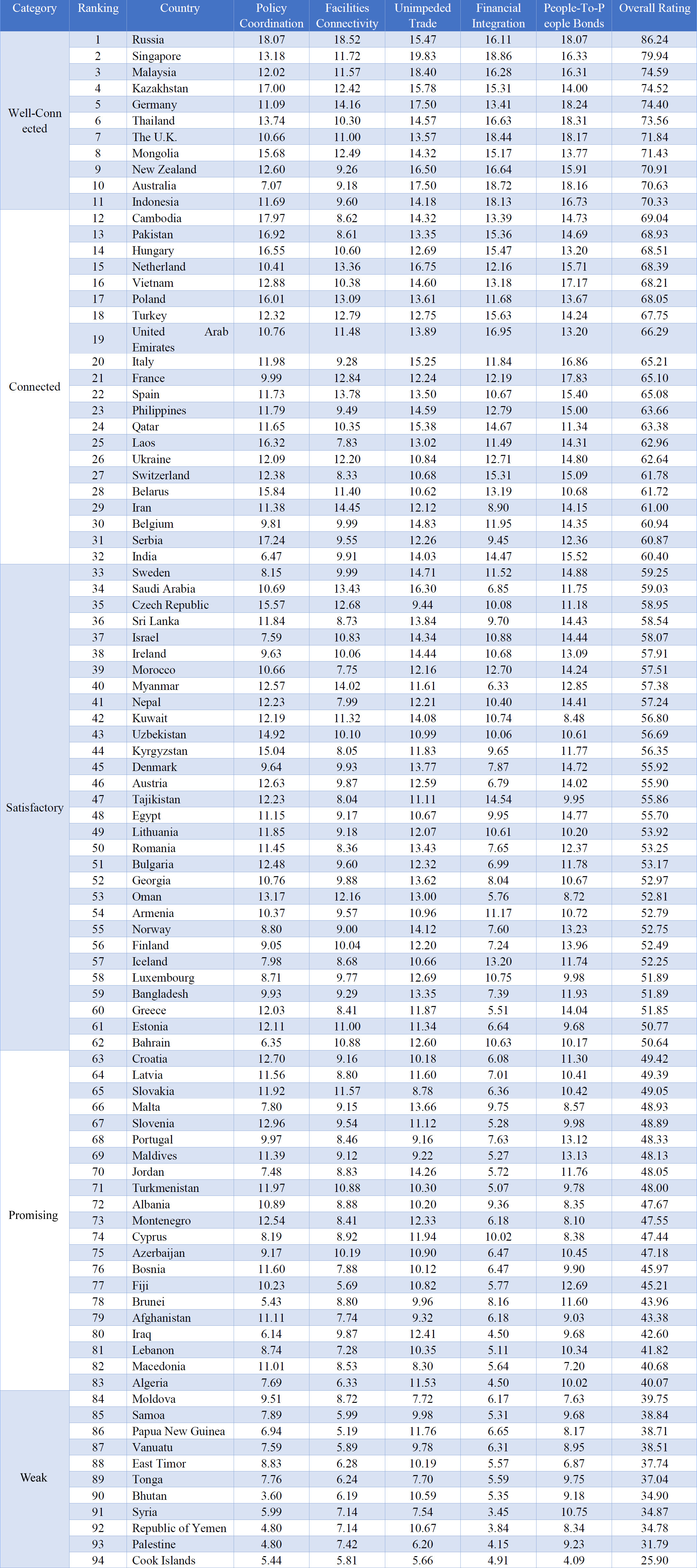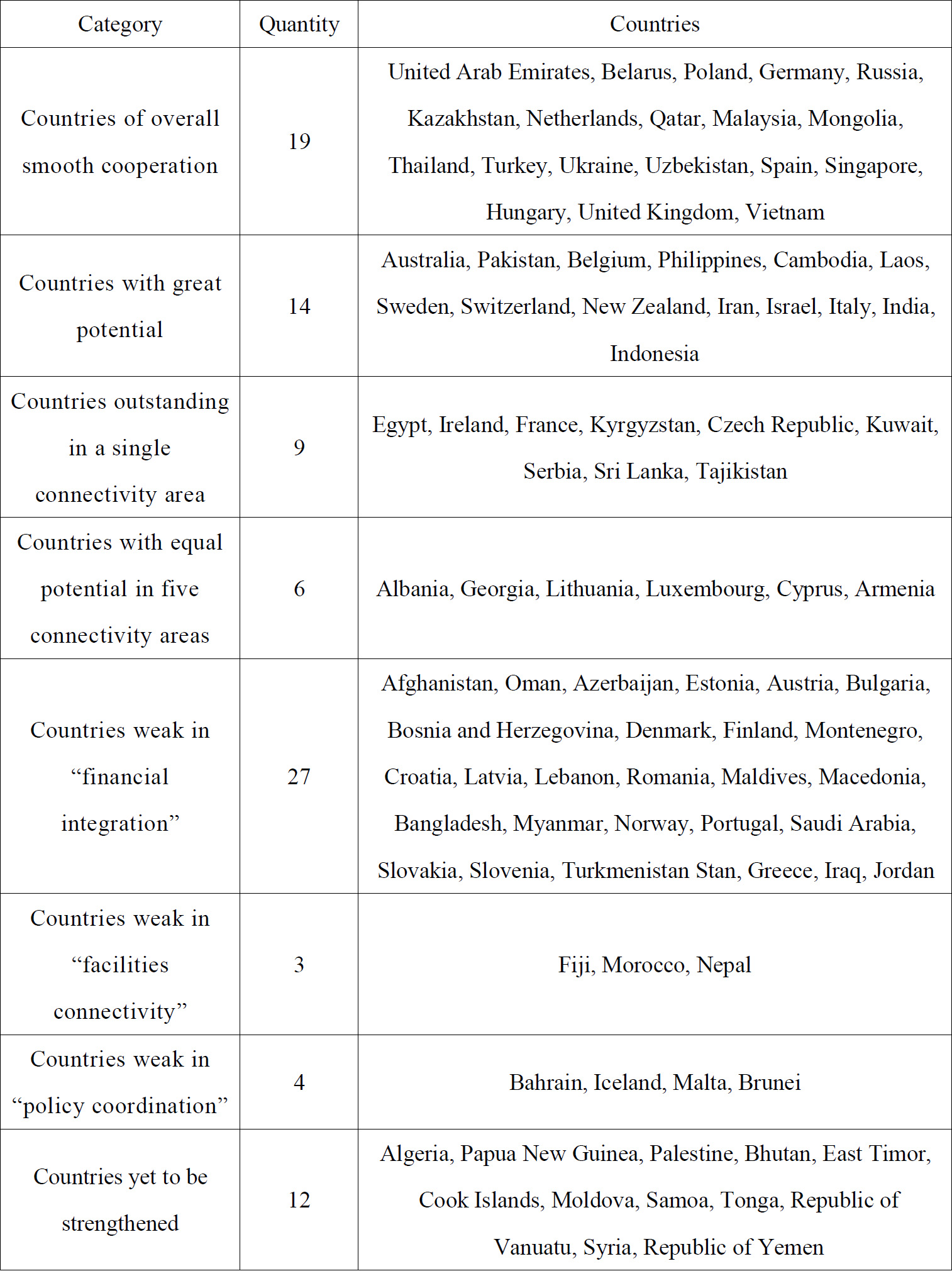As the basic cooperative framework of the Belt and Road Initiative, Five Connectivity refers to the practical cooperation between China and countries concerned in the following areas, namely, policy coordination, facilities connectivity, unimpeded trade, financial integration and people-to-people bond. “The Belt and Road Initiative: Annual Report on Five Connectivity Indexes is jointly released by Taihe Institute and the “Five Connectivity Index” Research Group of Peking University to provide quantitative and qualitative analysis and research reference for the development of the “Belt and Road” Initiative.
Based on previous research, this year’s report further expands the scope of measurement, optimizes the indication system, and improves the methods of measurement. The research covers 94 countries along the “Belt and Road” in Southeast Asia, South Asia, Central Asia, West Asia, North Africa, Europe, Oceania and other regions. It classifies the connectivity into five levels, namely “countries of smooth cooperation” (scoring 70 and above), “connected countries” (scoring 60 to 69), “countries of good cooperation” (scoring 50 to 59), “countries of potential for coorperation” (scoring 40 to 49), and “countries of weak cooperation” (scoring below 40).
K-means and hierarchical clustering methods are employed comprehensively in the measurement of data released by authoritative institutions at home and abroad, including the World Bank, the International Monetary Fund, the Web of Science database, the National Bureau of Statistics, the Ministry of Foreign Affairs, the Ministry of Commerce, the Ministry of Finance, the China Securities Regulatory Commission, and the People’s Bank of China. The results (see Appendix 1 for details) show that the average score of connectivity of 94 countries along the “Belt and Road” with China is 55.25, reaching the level of “good cooperation”, which indicates that overall the construction of the “Belt and Road” Initiative is upbeat, and there is significant room for improvement.
Using data analysis methods, including percentage analysis, mean analysis, and Pearson test, the research draws the following conclusions.
1. There is differentiation in the development of five connectivity areas. The differentiation among various countries in Five Connectivity development are significant.
2. The correlation among indexes of five connectivity is noticeable. The three indexes of “unimpeded trade”, “financial integration” and “people-to-people bond” are closely related to each other. “Facilities connectivity” is connected with the other four.
3. There is a significant difference among the levels of connectivity between China and various regions, with some European countries ranking high on the list.
4. The internal differences in some regions are highly conspicuous, with Southeast Asia, Eurasia, and Oceania have the most obvious internal differences.
5. Each region has distinct characteristics, and its own advantages in development of five connectivity areas.
Through the analysis of index characteristics by country, the research report classifies 94 countries into eight types: countries of overall smooth cooperation, countries with great potential, countries outstanding in a single connectivity area, countries with equal potential in five connectivity areas, countries weak in “financial integration”, countries weak in “facilities connectivity”, countries weak in “policy coordination”, and countries yet to be strengthened in cooperation (see Appendix 2 for details).
The present report proposes that in the future construction and development of the “Belt and Road” Initiative, China should “act according to categories”, and formulate targeted medium and long-term policies. Meanwhile, preventive measures should be taken by improving the monitoring and assessment mechanisms, timely assessment of potential risks of the weaknesses of Five Connectivity and formulating emergency plans.


—————————————————————
FOCUS ON CONTEMPORARY NEEDS.
Should you have any questions, please contact us at public@taiheglobal.org